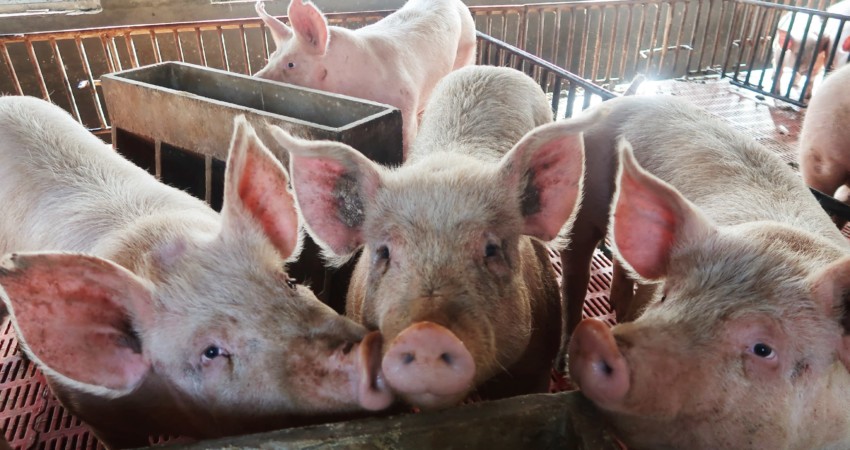

Good animal handling practices start with the handler having a good understanding of pig behavior. A significant portion of a pig’s behavior can be attributed to natural instinct and is further impacted by the age, gender, health status, environment and previous experiences of the pig.
Understanding a pig’s basic behavior can help: Facilitate animal handling , reduce stress, reduce risks to a handler’s personal safety and reduce losses due to skin injuries, bruises, fatigue and even death
Calm pigs are easier to handle than excited, agitated pigs. Handling will be easier and pigs will be less likely to become agitated and bunch together if handlers use basic behavioral principles. An important part of effectively using pig behavior during handling procedures is learning how the pig perceives and responds to the handler in different situations and environments.
There are three basic characteristics of the individual pig to consider:
Flight Zone
The flight zone is the area around an animal that it considers its individual space. Pigs try to maintain a safe distance between themselves and their handlers. That safe distance varies between pigs, from moment to moment for each pig, and with even minor changes in handler behavior and body language. The more threatening the handler is, the greater the distance pigs want to keep from us. When a handler gets too close or too threatening, pigs get scared or defensive and their body language and behavior change. Handlers need to recognize cues that pigs are getting scared and release their pressure to let pigs calm down and stay responsive.
Point of Balance
The pig uses its point of balance to determine which way to move away from the handler as long as the pig has space to move away and the handler allows it to move away. Typically, the point of balance is located at a pig’s shoulder but this may change depending on the environment. There are many conditions where the point of balance will not accurately predict how a pig will respond. There are situations where best results are achieved by working ahead of pigs and letting them circle past for example, as they move out a gate. A common error handlers may make is attempting to move the pig forward while standing in front of the pig and tapping it on the rear or pressuring it to move forward. Also handlers should not move, block or interfere from a forward position when another handler is attempting to move pigs past them. Pigs may balk and refuse to move if they are driven towards visible people.
Senses – sight, hearing, and smell
A pig relies on their sense of hearing and smell to situate itself in its surroundings and uses sight to complement information gathered by these two senses.
The blind spot exists because a pig’s eyes are on the sides of its head and a pig’s field of vision is approximately 310 degrees leaving a blind spot directly behind it.
Pigs want to see anything that is a potential threat or source of pressure. They try to keep handlers out of their blind spots. Pigs hold still and use their hearing to track people they can’t see. We have to notice what pigs are paying attention to in order to move
 Contact Jaguza Support
Contact Jaguza Support